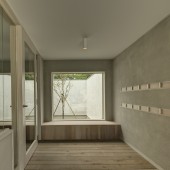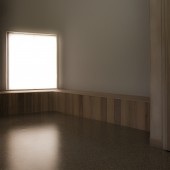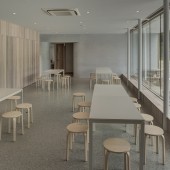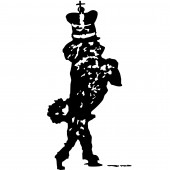Orandajima House Afterschool Facility by Martin van der Linden |
Home > Winners > #36146 |
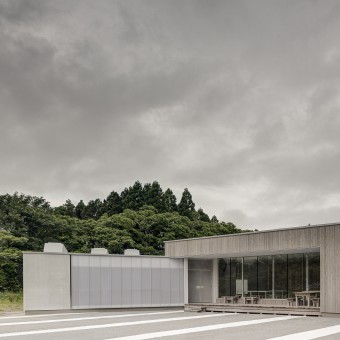 |
|
||||
| DESIGN DETAILS | |||||
| DESIGN NAME: Orandajima House PRIMARY FUNCTION: Afterschool Facility INSPIRATION: After a devastating earthquake and tsunami hit the town on 11 March 2011, Martin van der Linden and several major companies were urged to help by a longtime friend of Yamada machi in The Hague, the Netherlands. This business group decided to offer the town a facility where children would have a place to play, heal and come together. Having gone to the city shortly after the tsunami and seeing the devastation first hand was our biggest inspiration and motivation. UNIQUE PROPERTIES / PROJECT DESCRIPTION: Yamada machi is a town located on the central coastline of Iwate prefecture in Japan. Following extensive consultations with the Yamada machi authorities, it was proposed in February 2012 to establish an Afterschool house and Community Centre. A foundation, called Orandajima was established and is named after the island where in 1643 a Dutch ship, called the Breskens landed in the Bay of Yamada. OPERATION / FLOW / INTERACTION: The building is positioned in such a way that daylight during the winter months will fall deep into the building, while during the summer months an overhang will provide shade. On the west side of the building we have placed a translucent polycarbonate window. Behind this window are trees and the orange light of dusk will cast beautiful shadows on this panel, not unlike patterns seen in Japanese rice paper screens. PROJECT DURATION AND LOCATION: The project started with various design proposals in April 2011. A final design was submitted on November 2013. Construction started December 2013 until April 2014. The building was officially opened on 25th May 2014. FITS BEST INTO CATEGORY: Architecture, Building and Structure Design |
PRODUCTION / REALIZATION TECHNOLOGY: The programme asked for a flexible building of around 200 square meters to accommodate about 60 children to be used for their after school activities. All the people who worked on the site are from Yamada machi. The building is positioned in such a way that daylight during the winter months will fall deep into the building, while during the summer months an overhang will provide shade. Materials: wood structure, cedar timber cladding, steel columns, polycarbonate , glass, marmoleum, wood wool, Italian stucco. SPECIFICATIONS / TECHNICAL PROPERTIES: Dimensions: 31000 mm Width x 23000 mm Depth x 4200 mm Height total 196.41 square meters TAGS: architecture, after school facility, community centre, re-building japan, local community, day light, child focus design, authentic experience RESEARCH ABSTRACT: We believe that architecture should enhance the context and the way the light travels through the building and changes the lighting during those hours will create a quiet, theatrical play that unconsciously will have an effect on the children's well being. The design shuns the use of bright colours, as I felt that this space should not excite but calm the children who witnessed the horrors of the tsunami. This is an architecture that aims at creating an authentic, poetic experience of space. CHALLENGE: The hardest part of the design activity was the slow place with which the project progressed. This was due to bureaucratic hurdles and financial restraints. The former we overcame by working very closely with the local government and the bureaucrats of Yamada-machi. The financial difficulties were solved by having various companies sponsor the project through donations, the main donor Canada Wood provided 20 percent of the total construction cost by donating wood and wood products. ADDED DATE: 2014-08-19 22:37:36 TEAM MEMBERS (3) : Architect: Martin van der Linden, Design team: Ayumu Ota, Yuko Kawakita and Structural engineer: Alan Burden IMAGE CREDITS: Photography: Josh Lieberman, Martin van der Linden |
||||
| Visit the following page to learn more: http://tinyurl.com/mhzmuzb | |||||
| AWARD DETAILS | |
 |
Orandajima House Afterschool Facility by Martin Van Der Linden is Winner in Architecture, Building and Structure Design Category, 2014 - 2015.· Read the interview with designer Martin van der Linden for design Orandajima House here.· Press Members: Login or Register to request an exclusive interview with Martin van der Linden . · Click here to register inorder to view the profile and other works by Martin van der Linden . |
| SOCIAL |
| + Add to Likes / Favorites | Send to My Email | Comment | Testimonials | View Press-Release | Press Kit |
Did you like Martin Van Der Linden's Architecture Design?
You will most likely enjoy other award winning architecture design as well.
Click here to view more Award Winning Architecture Design.


